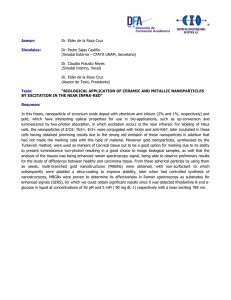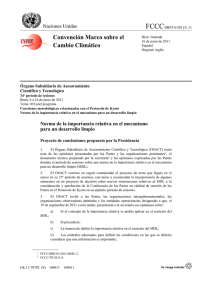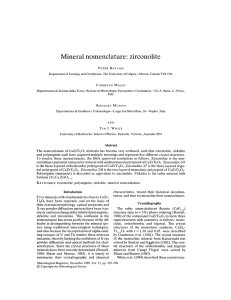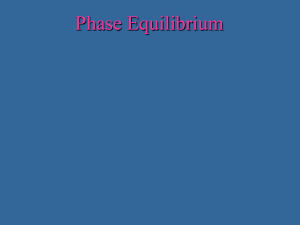Proton induced luminescence of minerals
Anuncio
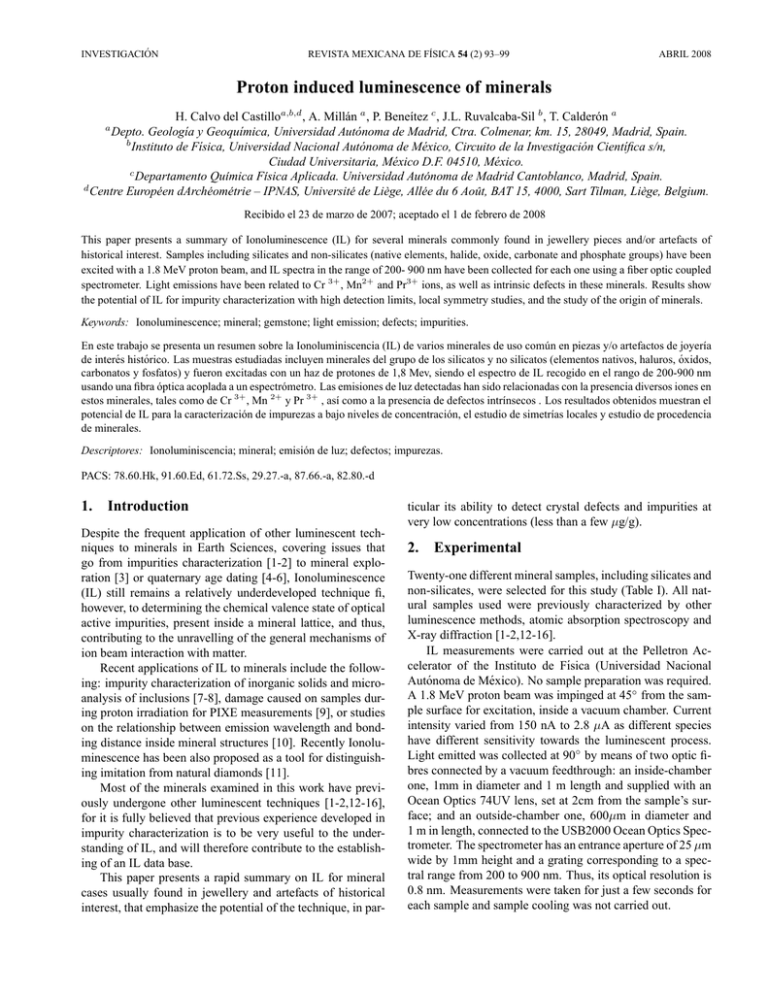
INVESTIGACIÓN REVISTA MEXICANA DE FÍSICA 54 (2) 93–99 ABRIL 2008 Proton induced luminescence of minerals H. Calvo del Castilloa,b,d , A. Millán a , P. Beneı́tez c , J.L. Ruvalcaba-Sil b , T. Calderón a Depto. Geologı́a y Geoquı́mica, Universidad Autónoma de Madrid, Ctra. Colmenar, km. 15, 28049, Madrid, Spain. b Instituto de Fı́sica, Universidad Nacional Autónoma de México, Circuito de la Investigación Cientı́fica s/n, Ciudad Universitaria, México D.F. 04510, México. c Departamento Quı́mica Fı́sica Aplicada. Universidad Autónoma de Madrid Cantoblanco, Madrid, Spain. d Centre Européen dArchéométrie – IPNAS, Université de Liège, Allée du 6 Août, BAT 15, 4000, Sart Tilman, Liège, Belgium. a Recibido el 23 de marzo de 2007; aceptado el 1 de febrero de 2008 This paper presents a summary of Ionoluminescence (IL) for several minerals commonly found in jewellery pieces and/or artefacts of historical interest. Samples including silicates and non-silicates (native elements, halide, oxide, carbonate and phosphate groups) have been excited with a 1.8 MeV proton beam, and IL spectra in the range of 200- 900 nm have been collected for each one using a fiber optic coupled spectrometer. Light emissions have been related to Cr 3+ , Mn2+ and Pr3+ ions, as well as intrinsic defects in these minerals. Results show the potential of IL for impurity characterization with high detection limits, local symmetry studies, and the study of the origin of minerals. Keywords: Ionoluminescence; mineral; gemstone; light emission; defects; impurities. En este trabajo se presenta un resumen sobre la Ionoluminiscencia (IL) de varios minerales de uso común en piezas y/o artefactos de joyerı́a de interés histórico. Las muestras estudiadas incluyen minerales del grupo de los silicatos y no silicatos (elementos nativos, haluros, óxidos, carbonatos y fosfatos) y fueron excitadas con un haz de protones de 1,8 Mev, siendo el espectro de IL recogido en el rango de 200-900 nm usando una fibra óptica acoplada a un espectrómetro. Las emisiones de luz detectadas han sido relacionadas con la presencia diversos iones en estos minerales, tales como de Cr 3+ , Mn 2+ y Pr 3+ , ası́ como a la presencia de defectos intrı́nsecos . Los resultados obtenidos muestran el potencial de IL para la caracterización de impurezas a bajo niveles de concentración, el estudio de simetrı́as locales y estudio de procedencia de minerales. Descriptores: Ionoluminiscencia; mineral; emisión de luz; defectos; impurezas. PACS: 78.60.Hk, 91.60.Ed, 61.72.Ss, 29.27.-a, 87.66.-a, 82.80.-d 1. Introduction Despite the frequent application of other luminescent techniques to minerals in Earth Sciences, covering issues that go from impurities characterization [1-2] to mineral exploration [3] or quaternary age dating [4-6], Ionoluminescence (IL) still remains a relatively underdeveloped technique fi, however, to determining the chemical valence state of optical active impurities, present inside a mineral lattice, and thus, contributing to the unravelling of the general mechanisms of ion beam interaction with matter. Recent applications of IL to minerals include the following: impurity characterization of inorganic solids and microanalysis of inclusions [7-8], damage caused on samples during proton irradiation for PIXE measurements [9], or studies on the relationship between emission wavelength and bonding distance inside mineral structures [10]. Recently Ionoluminescence has been also proposed as a tool for distinguishing imitation from natural diamonds [11]. Most of the minerals examined in this work have previously undergone other luminescent techniques [1-2,12-16], for it is fully believed that previous experience developed in impurity characterization is to be very useful to the understanding of IL, and will therefore contribute to the establishing of an IL data base. This paper presents a rapid summary on IL for mineral cases usually found in jewellery and artefacts of historical interest, that emphasize the potential of the technique, in par- ticular its ability to detect crystal defects and impurities at very low concentrations (less than a few µg/g). 2. Experimental Twenty-one different mineral samples, including silicates and non-silicates, were selected for this study (Table I). All natural samples used were previously characterized by other luminescence methods, atomic absorption spectroscopy and X-ray diffraction [1-2,12-16]. IL measurements were carried out at the Pelletron Accelerator of the Instituto de Fı́sica (Universidad Nacional Autónoma de México). No sample preparation was required. A 1.8 MeV proton beam was impinged at 45◦ from the sample surface for excitation, inside a vacuum chamber. Current intensity varied from 150 nA to 2.8 µA as different species have different sensitivity towards the luminescent process. Light emitted was collected at 90◦ by means of two optic fibres connected by a vacuum feedthrough: an inside-chamber one, 1mm in diameter and 1 m length and supplied with an Ocean Optics 74UV lens, set at 2cm from the sample’s surface; and an outside-chamber one, 600µm in diameter and 1 m in length, connected to the USB2000 Ocean Optics Spectrometer. The spectrometer has an entrance aperture of 25 µm wide by 1mm height and a grating corresponding to a spectral range from 200 to 900 nm. Thus, its optical resolution is 0.8 nm. Measurements were taken for just a few seconds for each sample and sample cooling was not carried out. 94 H. CALVO DEL CASTILLO, A. MILLÁN, P. BENEÍTEZ, J.L. RUVALCABA-SIL, AND T. CALDERÓN TABLE I. Mineral samples studied for this work. Mineral General Composition Colours Diamond C Yellow Brown Orange Milk-white Fluorite CaF2 Green, Dark blue, light blue, pink and ultrapure synthetic colourless Ruby Red Al2 O3 Sapphire Blue, Pink Calcite CaCO3 Colourless Strontianite SrCO3 Colourless Apatite Ca5 (PO4 )3 (F,Cl,OH) Light yellow Kyanite Al2 SiO5 (Fe3+ ) Colourless Garnet Ca3 Al2 (SiO4 )3 Green Spodumene LiAl(Si2 O6 ) Yellow Emerald Green Be3 Al2 Si6 O18 Aquamarine Light blue Tourmaline (Elbaite) XY3 Z6 (Si6 O18 )(BO3 )3 (O,OH)3 (OH,F) Pink Quartz Amathyst SiO2 Purple 3. Results and discussion found in its lattice. Further experimental work is therefore needed on this area. Spectra obtained for other diamond samples are very similar. Our attention was captured by the fact that all the natural diamond samples: a) Non-silicates Diamond (Native elements) As is well known, diamond is the high-pressure, stable polymorph for carbon. Point defects in natural diamond have been studied for at least 30 years [1,13]. Its main impurities, Boron and Nitrogen, are responsible for its luminescence. The main IL diamond emissions previously reported are a blue band (observed in natural and CVD synthetic diamonds), centred at about 430 nm, a 620 nm band related to N-V centres, and a 512 nm band also called “damage peak” for it occurs in diamond after hard irradiation [14,15]. IL emission bands for natural diamond detected in this work is displayed in [Fig. 1]. Our natural diamonds showed emission bands at 412-415 (N3 centres), 430- 445 (A-band and N-related centres), 502 (H3 centres) and 637 (N-V centres) nm. However, this characterization should be taken with caution, for research studies over the last 30 years point out that regarding the complexity of the diamond defects, this emission may well come from other kind of imperfections i) independently of their colour, showed a similar IL emission spectrum, suggesting the possibility of characterizing diamond natural samples by their IL spectrum; ii) the IL emission spectrum presented here is more complex and better defined than those previously reported, indicating the complexity of the traps related to the phenomenon; and iii) all IL bands detected are related to N-impurities emission centres. Further studies need to be conducted for more definite results. Fluorite (Halide) Fluorite (CaF2 ) is present in nature in different colours due to the impurities and defects that it contains. Its structure can Rev. Mex. Fı́s. 54 (2) (2008) 93–99 PROTON INDUCED LUMINESCENCE OF MINERALS 95 natural sapphire, a treated pink one, and a ruby. The expected Cr3+ emission at 695nm for the ruby was also detected for both the sapphires. This transition, due to the splitting of the 2 E level, comes along a non-cubic crystal field inside the lattice, and is superimposed on another band that spans from 630 to 750 nm, related to the 4 T2 →4 A2 transition of Cr3+ . Emission bands at 330 nm are due to the presence of F+ colour centres detected in ruby and both sapphires, respectively. F3+ centres were observed for the pink sapphire (290 nm). F IGURE 1. IL spectra for non-silicate minerals; (a) Yellow Diamond, (b) Green Fluorite. be described as an FCC for calcium ions where fluorine ions occupy all the Td positions. Fluorite usually carries impurities such as Y3+ , Cs2+ substituting Ca2+ or rare earths such as Eu2+ , Eu3+ , Pr3+ as well as intrinsic defects. Figure 1b shows the IL spectrum detected for green fluorite. A broad emission band peaking at 250, 275, 300, 320, 340, 380, 413, and 485 nm, extending from UV, can be observed. The strong UV emissions with maxima near 250, 275, 300 and 420 nm have been detected elsewhere in previous studies [18,19] and attributed to intrinsic defects (F3+ an F+ colour centres) [20]. This latter assumption seems to be supported, in our case, by the fact that these emissions have been also detected in an ultra-pure synthetic fluorite sample studied here. Ruby and Sapphire (Oxides) Corundum (Al2O3) is present in nature as two gemstones; ruby (Al2 O3 : Cr3+ ) and sapphire (Al2 O3 : Fe2+ , Ti4+ ). Colour and luminescence in ruby is due to the presence of chromium while in sapphire, a charge transfer phenomenon between Fe2+ and Ti4+ is held responsible for both characteristics. Figures 2a, 2b and 2c show the IL spectra for a F IGURE 2. IL spectra for non-silicate minerals; (a) Sapphire (b) Treated Pink Sapphire (c) Ruby. Rev. Mex. Fı́s. 54 (2) (2008) 93–99 96 H. CALVO DEL CASTILLO, A. MILLÁN, P. BENEÍTEZ, J.L. RUVALCABA-SIL, AND T. CALDERÓN features and broads bands. Emission spectra for a representative strontianite sample (SrCO3 ) can be observed in Fig. 3b. Bands detected at 481, 491, 544, 578, 600, 643 and 658 nm can be also related to different transitions of the Mn2+ ions. Orthorhombic and rhombohedral carbonates differ in the coordination number of Mn2+ ions; while in orthorhombic carbonates Mn2+ is surrounded by nine oxygen ions in a distorted polyhedron (Oh symmetry), rhombohedral ones have a six-fold coordination for this ion. Apatite (Phosphate) Apatite, (Ca5 (PO4 )3 (F,Cl,OH)), belongs to the phosphate group and has an economic interest as a potassium source for fertilizers. It is also a main constituent of bones and teeth. The studied sample is from La Celia mine, in Murcia, Spain. Bands detected at 390, 485, 560, 600, 650, 703, 750 and 810 nm are in good agreement with those previously reported for luminescence studies (excitation-emission) of this mineral. The most intense visible emission, even detectable by the naked-eye, is located in the 500-700 nm spectral range (Fig. 3c). This well-known red emission presents high quantum efficiency and can be attributed to 1 D2 →3 H4 transition Pr 3+ [16,20]. b) Silicates Kyanite F IGURE 3. IL spectra for non-silicate minerals; (a) Calcite, (b) Strontianite, (c) Apatite. Calcite and Strontianite (Carbonates) [10] Ionoluminescence emission representative of calcite (CaCO3 ) is shown in Fig. 3a. The different bands detected have been previously assigned to different Mn2+ transitions, from levels 4 F, 4 D, 4 P, 4 G to level 6 S; the stronger feature is the line near 610 nm assigned to 4 T1g →6 S in calcite [11,12]. The overall pattern for orthorhombic carbonates is similar to that observed in rhombohedral ones; Mn2+ ions contribute with a red to orange emission, signals varying between line Even though Cr3+ has sometime been reported to be present in kyanite [21], this mineral tends to have a composition that matches the chemical formula Al2 SiO5 with apparently only a very limited amount of Fe 3+ being able to enter the structure. Figure 4a represents its emission spectrum, obtained during the proton beam irradiation. The main feature to be seen is a broad band in near IR wavelength region spectrum from 600 to 800 nm, peaking at 690 nm and 710 nm. These last two bands correspond to the typical emission of Cr3+ ions in a nearly cubic intermediate crystal field [22]. The former two, instead, correspond respectively to the so-called R1 and R2 lines associated with the two components of the 2 E →4 A2 magnetic dipole transition in a predominantly cubic crystal field; whereas the low energy bands could be due to either to phonon side bands, or R’ lines corresponding to Cr3+ located in different crystal field sites. The broad band appearing from 600-750 nm is associated with a 4 T2 → 4 A2 transition of the Cr 3+ ion, which happens to be thermally activated at room temperature. Green Garnet (Grossular) 3+ 2+ Although garnet (R2+ = Ca, Mg, Fe, Mn 3 R2 (SiO4 )2 ; R 3+ and R = Al, Fe, Mn, Cr) is an ideal structure for observing efficient luminescent ions such as Cr3+ , Mn2+ or Y3+ , no sign of those ions has been detected whatsoever in our sample. In fact, the IL emission spectrum of grossular only displays a weak, narrow band located at about 740 nm, that is Rev. Mex. Fı́s. 54 (2) (2008) 93–99 PROTON INDUCED LUMINESCENCE OF MINERALS related in framework silicates to the 4 T1 →6 A1 ion transition of Fe3+ whenever it substitutes Al3+ [23-25]. 97 ies of Cr3+ on this mineral [27]. On the other hand, for the aquamarine sample a very weak signal was observed at 680 nm. This emission is related to the presence of Fe3+ [12]. Spodumene Pink Tourmaline (Elbaite) The chemical composition of spodumene does not show any great variation from the ideal formula LiAlSi2 O6 ; there is no replacement of Si 4+ by Al 3+ at all, and only minor substitution of Al 3+ by Fe 3+ and Mn2+ in M1 octahedral site occurs. The luminescent spectrum in Fig. 4b can be related to manganese ion Mn2+ in octahedral coordination in an M1 site. The 585 and 620 nm emission bands have been assigned to 4 A2g →4 T2g and 4 T1 g →6 S manganese ion transition in distorted octahedral coordination [12,26]. Emerald and Aquamarine Emerald and aquamarine are the Cr3+ and Fe3+ respectively rich varieties of beryl; a cyclosilicate with a chemical composition that can be written according to the following expression: R+ Be3 R3+ R 2+ Si6 O18 , with R + = (Na, K, Cs); R 2+ would include Fe 2+ , Mn2+ and Mg2+ and R3+ = Al 3+ , 3+ Fe or Cr3+ . Figure 4c shows the IL spectrum for the emerald sample. Emission bands detected at 690, 715, 735 and 765 nm are very close to those reported for luminescent stud- Tourmaline is usually considered as: XY3 Z6 (Si6 O18 ) (BO3 )3 (O,OH)3 (OH,F) where: X= Na+ , Ca2+ ; Y = Mg2+ , Fe2+ , Mn2+ , Li+ , Al3+ ; Z = Al3+ ,Mg2+ , Fe3+ . Elbaite is the Al3+ , Li+ member rich of elbaite-chorlo-dravite tourmaline series. Figure 4d shows the IL spectrum of an elbaite tourmaline. Emission lines in the blue (420 nm) and orange (610 nm) range of the spectrum can be related to 4 G→6 S of the Mn2+ ion transition (590 and 620 nm). Manganese should be located in octahedral Y sites, surrounded by oxygen and (OH-) ions. Similar results were reported for tourmalines in Ref. 13. Quartz–Amethyst Quartz (SiO2 ) is probably one of most studied minerals in luminescence. Thermoluminiscence archaeological dating, dose determination, optically stimulated luminescence dating, and diverse defect characterization have been applied to it. Luminescent studies reveal the complexity of its emission F IGURE 4. IL spectra for silicate minerals; (a) Kyanite, (b) Spodumene, (c) Emerald, (d) Pink Tourmaline. Rev. Mex. Fı́s. 54 (2) (2008) 93–99 98 H. CALVO DEL CASTILLO, A. MILLÁN, P. BENEÍTEZ, J.L. RUVALCABA-SIL, AND T. CALDERÓN (iv) non radiative decay of the excitons; needs to be considered together with a radiative emission model. Our data suggest that both mechanisms (non-radiative and radiative transitions) compete during the proton-irradiation process. The increase in temperature (amorphousization) implies a decrease in the radiative transition and an increase in non-radiative emissions. 4. Conclusions Emission spectra during proton irradiation (IL) have been obtained for a set of minerals of historical/artistic interest. Main conclusions are: F IGURE 5. IL spectra for green Fluorite as a function of the irradiation time from 0 to 180 s. Proton beam current on the sample was 150 nA. mechanisms and the diversity of traps responsible or related to them. Weak signals at 560 and 650 nm have been detected. These emissions have been reported as C and D bands [28], related to wet-grown SiO2 defects, and, to some extent, to (OH-) and H2 O molecular groups. Luminescent data for quartz are known to be complex and the interpretation of the mechanisms responsible for emission and defect assignation are still open questions. c) IL emission spectrum variation with time Light intensity variation as a function of time was observed for all samples studied. For instance, the green fluorite’s homogeneous decreasing emission with time can be seen in Fig. 5 from 0 to 180 s. Proton beam current on the sample was 150 nA. IL intensity variations with time have been previously reported and related to different effects such as sample heating or amorphousization [8,13]. Other studies that mention the increase in the sample’s temperature that accompany its proton irradiation explain this phenomenon by taking into account an excitation-spike model [29]. In general, all IL data presented in this work are very similar to other reported data, mainly in photoluminescence studies. This seems to suggest that, to some degree, the mechanism responsible for the emissions detected is similar for both cases, notwithstanding the fact that in an IL measurement, there is usually an amorphousization process also taking place [13,29]. We suggest that in order to understand IL process emission, the Excitation-Spike Model [30] which includes: (i) excitation of the electronic system, (ii) slowing down of the electron and phonon creation (heating), (iii) location of the energy as trapped (self- trapped or trapped at a defect centre) excitons and i) Cr3+ ion has been detected for some minerals; sapphire, kyanite and emerald. chromium in sapphire and kyanite is present in very low concentration, therefore IL proves to be an extremely sensitive method for detecting this impurity. ii) Mn2+ ions have been detected for calcite, spodumene, and Fe3+ for Aquamarine. iii) Pr3+ ion has been detected for apatite crystals. iv) A set of intrinsic defects, as well as those irradiation induced, namely in sapphire, fluorite and diamond, have been also detected. A reduction in luminescence emission as a function of the time was observed for most of the minerals. Mechanisms of non-radiative and radiative transitions compete during the proton-irradiation but when the temperature increases, the amorphousization process favours the non-radiative emissions. IL spectroscopy is a very useful method fot understanding material phenomena such as i) radiation-matter interaction, ii) impurity characterization; iii) local symmetry studies, iv) origin, colour and provenance studies of minerals. The data presented give a general overview of the technique’s potential for the identification of minerals and contribute to the creation of a new IL database that will be of much use for future applications. We truly believe that IL has an important role to play not only as an analytical tool in the mineralogical and archaeometric field, but also in radiationmatter interaction studies. Rev. Mex. Fı́s. 54 (2) (2008) 93–99 PROTON INDUCED LUMINESCENCE OF MINERALS Acknowledgements We wish to thank Dr. Ernesto Belmont from the IFUNAM and the Escuela de Gemologı́a of the UAM for kindly permitting us some of the minerals used in this work. We also wish to thank technicians K. López and F. Jaimes for their 99 help at the Pelletron Accelerator of the IFUNAM during the measurements, and Spanish Agencia Española de Cooperacion Internacional Project AECI no A/9332/07, UAM- SCH, Mexico UNAM-DGAPA-PAPIIT IN403302 and IN216903, projects for financial support. 1. T. Calderón, A. Millán, F. Jaque, and J. Garcı́a-Solé, Nucl. Tracks Radiat. Meas. 17 (1990) 557. 17. A.M. Zaitsev, Optical properties of Diamond (Springer, Berlin, 2001). 2. H.M. Rendell, M.R. Khanlary, P.D. Townsend, T. Calderón, and B.J. Luff, Mineral Magazine 57 (1993) 217. 18. C.M. Subramanian and M.L. Mukherjee, J. Mater. Sci. 22 (1987) 473. 3. Gunnell and E. Mitchell, America Mineralogist 18 (1993) 68. 19. S.A. Holgate, T.H. Sloane, P.D. Townsend, P.D. White, and A.V. Chadwick, J. Phys. Condens. Matter 6 (1994) 9255. 4. H. Rendell, T. Calderón, A. Pérez-González, J. Gallardo, A. Millán, and P.D. Townsend, Quaternary Geocronology 13 (1994) 429. 5. A.G. Wintle, Radiation Protection Dosimetry 47 (1993) 627. 6. M.J. Aitken, Science-based Dating in Archaeology (Longman, London, 1990). 20. V.A. Skuratov, S.M. Abu Al Azm, and V.A. Altynov, Nucl. Instr. & Meth. B 191 (2002) 251. 21. W. Deer, R.A. Howie, and J. Zussman, The Rock Forming Minerals (Prentice Hall, London, 1992). 7. Y. Sha, P. Zhang, G. Wang, X. Zhang, and X. Wang, Nucl. Instr. & Meth. B 189 (2002) 408. 22. A.N. Tarashchan, Luminescence of minerals (Naukova Dumka, Kiev, 1978). 8. C. Yang, K.G. Malmqvist, M. Elfman, P. Kristiansson, J. Palon, A. Sjöland, and R.J. Utui, Nucl. Instr. & Meth. B 130 (1997) 746. 23. J.E. Geake and G. Walker, Infrarred and Raman spectroscopy of lunar and terrestrial minerals (Academic Press, New York, 1975) p. 73. 9. O. Enguita et al., Nucl. Instr. & Meth. B 219/220 (2004) 53. 24. W.B. White, M. Masako, D.G. Linneham, T. Furukawa, and B.K. Chandrasekahr, Am. Mineral 71 (1986) 1415. 10. H. Calvo del Castillo et al., Nucl. Instr. & Meth. B 249,1/2 (2006) 217. 11. H. Calvo del Castillo, J.L. Ruvalcaba, and T. Calderón, Anal. Bioanal. Chem. 387 (2007) 869. 25. A.A. Finch and J. Klein, Contrib. Mineral Petrol. 135 (1999) 234. 12. T. Calderón et al., Radiat. Meas. 26 (1996) 719. 26. A.S. Marfunin, Spectroscopy, Luminsecence and Radiation Centers in Minerals (Springer, Berlin, 1979) p.196. 13. T. Calderón and R. Coy-Yull, Journ. Gemmology, XVIII (3) (1982) 217. 27. E.M. Flangen, D.W. Breck, N.R. Mumbach, and A.M. Taylor, Am. Mineral. 52 (1967) 744. 14. H.M. Rendell, M.R. Kahanlary, P.D. Townsend, T. Calderón, and B.J. Luff, Mineral Magazine 57 (1993) 217. 28. H. Koyama, J. Appl. Phys. 51 (1980) 2228. 15. T. Calderón, M.R. Khanlary, H.M. Rendell, and P.D. Townsend, Nucl. Tracks Rad. Meas. 20 (1992) 475. 29. N. Itoh and A.M. Stoneham, Nucl. Instr. & Meth. B 146 (1998) 362. 16. E. Cantelar et al., Jour. Alloy & Compounds 323/324 (2001) 851. 30. G.H. Dieke, Spectra and Energy of Rare Earth Ions in Crystals (Wiley Interscience, New York, 1988). Rev. Mex. Fı́s. 54 (2) (2008) 93–99




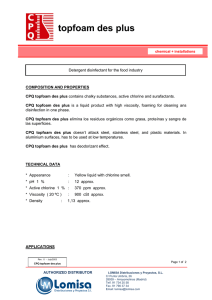

![Presentacion Chile - Canada [Modo de compatibilidad]](http://s2.studylib.es/store/data/006031439_1-d894d5d2d359230b5c2007cc916df922-300x300.png)
